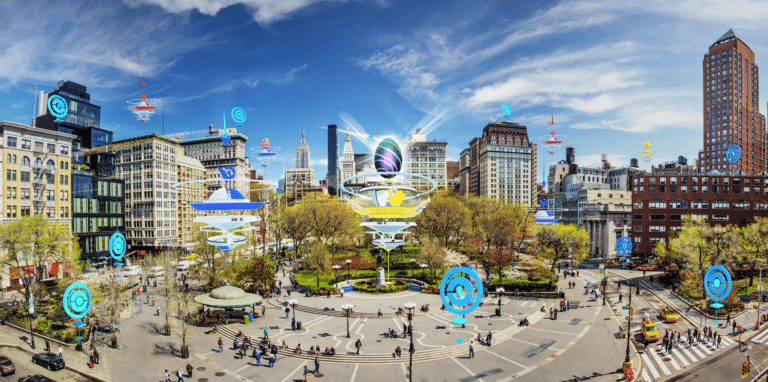
“Trendline” is AR Insider’s series that examines trends and events in spatial computing, and their strategic implications. For an indexed library of spatial computing insights, data, reports and multimedia, subscribe to ARtillery PRO.
Though not as popular as it’s mid-2106 heyday, Pokémon Go is quietly thriving. As once-obsessive media attention has moved on to other shiny things, Pokémon Go had its biggest revenue month in three years in August. Revenue to date meanwhile approaches $3 billion.
That mostly consists of in-app purchases (IAP). These are in-game payments for various items or level-up accelerants. The format is inherited from the broader mobile gaming sector, which continues to thrive on the behavioral economics of free-to-play games with microtransactions.
In fact, IAP was one of the top mobile AR business models examined in the latest report from our research arm ARtillery Intelligence (see video below). Because AR is too early and unproven to get people to pay upfront for premium apps, IAP has been a go-to model for consumer mobile AR.
The SMB Long Tail
Along with IAP, Niantic has derived a secondary and less-discussed revenue stream in sponsored locations. This is when brands like McDonald’s pay to have locations designated as official in-game waypoints. These are the Pokéstops and Gyms where players descend in large numbers.
For players, this can be organic as they work up a hunger through the game’s physical play. And for multi-location brands, it can be more effective than traditional marketing when it comes to driving tangible foot traffic. It’s particularly fitting to fast food, coffee and convenience stores.
The latest development is yesterday’s announcement that Niantic will extend sponsorship offers to small businesses (SMBs). Previously it worked with brands like McDonalds and Starbucks through formal partnerships. Now it taps into a longer-tail SMB market through a self-serve system.
This essentially happens as an offshoot of a new program called Wayfarer, which lets players vote on locations for Pokéstops and Gyms. SMBs can select locations in a more on-demand fashion and for a price. That price is $30 per month for a Pokéstop and $60 per month for a Gym.
The lower tier lets SMBs change Pokéstop images and descriptions (see below) monthly. The higher tier lets them schedule raids monthly and change a Gym’s image and description bi-weekly. To prevent sponsorship overload, SMBs can have one-stop or gym per location and 30 per chain.

The Anti-Amazon
These sponsorship options essentially offer levels of in-game promotion and foot traffic. For example, the raids offered at the higher tier often involve 5-10 players working together, meaning more footfalls. And SMBs can schedule these raids strategically during slow business hours.
Options also include the ability for SMBs to include deals/coupons in-app. And beyond getting players to a location, additional promotions can help keep them there. Niantic claims that it will roll out more such features, like letting SMBs host “mini-games” to further boost dwell times.
These are all attractive features, but SMB self-serve advertising is an elusive beast. This is a business segment we covered prior to AR (and ongoing). It invokes a challenge that’s often underestimated by tech companies selling to SMBs for the first time: they need their hands held.
If PGO sponsorship is a tangible-enough value proposition to get over that hump, it will be seen in the coming months. Niantic is accepting applications today for U.S. SMBs, with other regions to roll out soon. Sponsored locations will start showing up in December and early tests are positive.
At a press event this week, Niantic CEO John Hanke characterized the move as additive to gameplay and supportive to local businesses. Niantic has a penchant for altruism in its mission to get kids out of the house. This adds fuel in simultaneously supporting local economies.
“It’s the anti-Amazon,” said Hanke.
For deeper XR data and intelligence, join ARtillery PRO and subscribe to the free AR Insider Weekly newsletter.
Disclosure: AR Insider has no financial stake in the companies mentioned in this post, nor received payment for its production. Disclosure and ethics policy can be seen here.
Header image credit: Niantic
